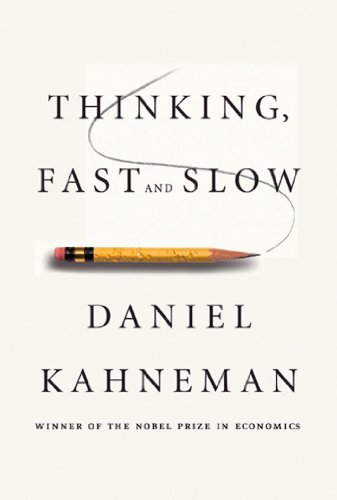“Thinking Fast and Slow” is a book that talks about how the human mind operates, covering details on how it struggles with biases, decision making, and misjudgment. It was written by Nobel laureate Daniel Kahneman, who has revolutionized the understanding of the human mind. In this blog post, we will explore the top 10 lessons from the book “Thinking Fast and Slow.”
“The confidence that individuals have in their beliefs depends mostly on the quality of the story they can tell about what they see, even if they see little.”
Lesson 1: Our Mind Has Two Systems
The human mind is divided into two systems, System One and System Two. System One is automatic, emotional, and fast, whereas System Two is deliberate, logical, and slow. Both systems work together, with System One relying on heuristics and intuition, while System Two is responsible for decision making, which comes from a more logical process.
Being aware of these two systems helps us understand how we make decisions and how it affects us every day.
Lesson 2: System One Heuristics
System One relies on heuristics, which are simple, implicit, and intuitive rules used by our brains to make quick decisions. However, because heuristics are based on stereotypes and generalizations, they can lead to biases, which can have a negative impact on our choices.
It is essential to recognize the existence of heuristics and understand how they play a part in our decision-making processes. We need to learn how to spot them and how to recognize the biases they may produce.
Lesson 3: Anchoring
Anchoring refers to the cognitive bias that comes from placing too much emphasis or importance on the first piece of information one receives. This can impact how we make decisions and can lead to skewed results, as we don’t take into account other factors that might influence our judgment.
Being aware of anchoring and taking the time to gather other relevant information before making decisions can help minimize its impact.
Lesson 4: Illusion of Control
The illusion of control is a cognitive bias that occurs when individuals believe that they have control over situations that are, in fact, outside of their control. This is particularly common in stock market investments, business investments, or gambling. It creates a false sense of security that leads to overconfidence and can cause severe losses.
It is important to recognize when the illusion of control is present and avoid putting ourselves in situations where we may be led to believe we can control the outcome.
Lesson 5: Confirmation Bias
Confirmation bias is a cognitive bias that occurs when individuals seek out information that confirms their beliefs, while ignoring evidence that contradicts them. This happens when people prefer affirming information because it creates more psychological comfort.
It is important to challenge our beliefs regularly, and to seek out information that contradicts what we believe in. By doing so, we are more likely to make informed and rational decisions.
Lesson 6: Sunk Cost Fallacy
The sunk cost fallacy occurs when individuals base their decisions on the belief that they have already invested too much to abandon the course they originally set out on. It leads to a situation where people feel trapped and unable to leave the situation, regardless of whether it is sensible to do so.
It is important to recognize the sunk cost fallacy and to avoid becoming trapped by it. We should learn to let go of sunk costs and make decisions based on the information that is available at the present time.
Lesson 7: Availability Bias
The availability bias is a cognitive bias that occurs when people base their decision making on the most readily available information, which is often the most recent or vivid in their mind. This can lead to incorrect judgments and decisions.
It is important to judiciously analyze all relevant information before making decisions in order to avoid the availability bias.
Lesson 8: Planning Fallacy
The planning fallacy is the tendency for people to underestimate the time it takes to complete a task, based on optimistic predictions of the future. This bias has a significant impact on people’s planning, as they often fail to account for unexpected roadblocks that may occur.
It is crucial to take into account potential roadblocks and to set more realistic timelines for completing tasks.
Lesson 9: Framing
Framing is the way in which information is presented to individuals, to achieve a desired effect. This can influence the choices we make, as we may be biased towards options that are presented in a certain way.
It is important to be aware of framing and to consider information from different perspectives before making a decision.
Lesson 10: Loss Aversion
Loss aversion is the tendency for people to prefer avoiding losses to acquiring gains. This can lead to indecisiveness, fear of venturing into new things, and indecisiveness, as people prefer sticking with what they know to avoid loss.
It is important to recognize that loss aversion is a cognitive bias and to consider the potential gains of a new opportunity before making the decision to avoid potential loss.
Conclusion
The book “Thinking Fast and Slow” provides insights into how the human mind works, and the biases that can affect our decision-making processes. By understanding the different cognitive biases that may lead to misconceptions or bad decisions, we can become more rational and informed in our choices. By taking the time to recognize these biases and analytically evaluate different perspectives, we can achieve better outcomes in both personal and professional situations.




